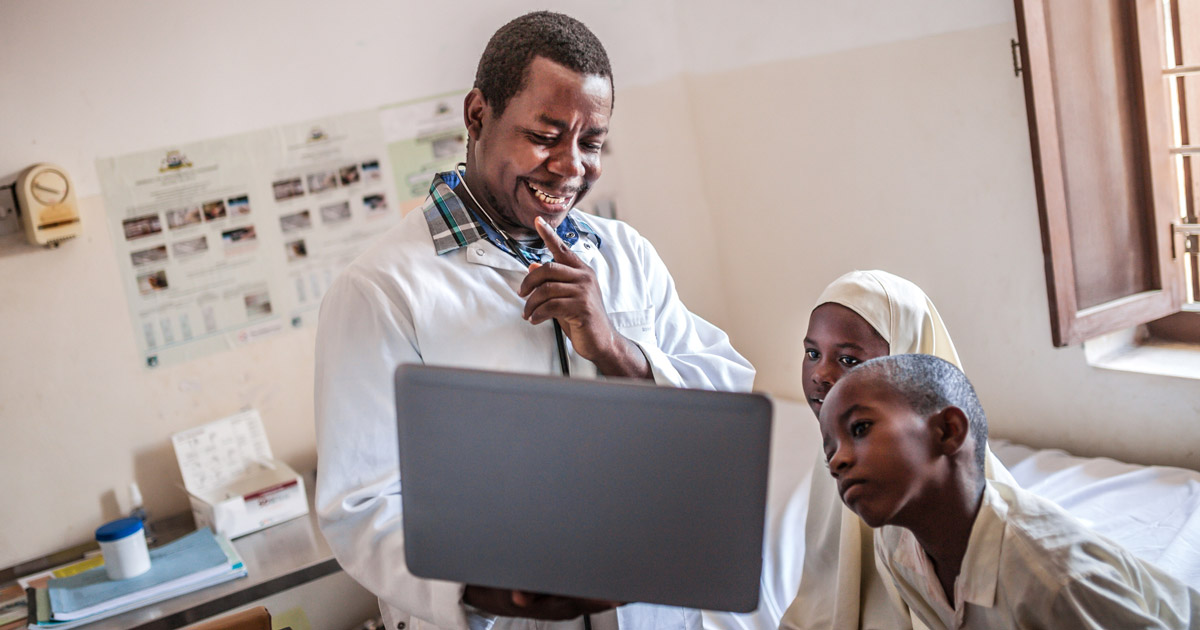
BOTEC’s expertise in the design of energy efficient buildings is demonstrated in their own headquarters building.
A solar powered hearing aid, a method for bonding sand from the Kgalagadi desert to make construction blocks, a photovoltaic charge controller, a Masa lamp – these are a few innovations to have emerged from the Botswana Technology Centre (BOTEC) in Gaborone.
An early BOTEC initiative led to successful innovation in the field of solar-powered products for deaf people. Some 167 million people in developing countries suffer from deafness, or disabling hearing impairment1,which limits their opportunities for education and employment. Low cost hearing aids, while available, are not designed for conditions in impoverished communities, where batteries are scarce and costly. To address this problem, BOTEC set up a collaborative project in 1992 with Motse Wa Badiri Camphill, a charitable NGO offering training, employment and rehabilitation services to people with disabilities in Botswana. The aim was to design, manufacture and distribute a low cost hearing device powered purely by the sun’s energy. BOTEC produced an initial prototype for a body-worn, solar-powered hearing aid. The Motse Wa Badiri Camphill team conducted field-tests, raised funds for design improvements, branded the device with the SolarAid name, and took it to market. The hearing aid won the Design for Development Award from the South African Bureau of Standards in 1998; and went on to win international recognition at the 2002 World Awards for Sustainable Energy in Austria.
The body-worn, solar rechargeable hearing aid generated considerable interest and was used in many developing countries. Yet the level of sales was not high enough to make it sustainable. So Motse Wa Badiri Camphill set up a separate organization, the Godisa2 Technologies Trust, in order to focus the expertise necessary to develop the promising pilot project into a genuinely successful product. Drawing on the previous experience, a Godisa team of young product designers and technicians developed a stand-alone, solar-powered battery recharger for behind-the-ear hearing aids. The recharger, now being successfully marketed under the SolarAid brand, requires only 6 to 8 hours of sunlight to maintain a full charge for a week. It was awarded a WIPO prize at Botswana’s 2005 National Design for Development Awards, which were hosted by BOTEC.
Sustainable solution
In line with broader government strategy, BOTEC’s principal focus is renewable energy. Nine engineers work on renewable energy-related research and projects in the Centre. In 1998 BOTEC established a centralized solar (photovoltaic) power station, which provides power for a health clinic, primary school, street lighting and up to 14 households in the village of Motshegaletau. The project has improved the quality of life for the residents and facilitated growth in the local business community. BOTEC is now in discussion with the Botswana Power Corporation concerning a national strategy for solar power stations.
The Centre prides itself in renewable energy technologies developed by its staff, such as the Photovoltaic charge controller, which ensures that a solar battery does not over- or under-charge, and the Masa lamp, a PV lamp that works with any power source producing between 10 to 16 Volts. These and earlier technologies have been successfully transferred to local entrepreneurs.
Sustainable architecture is another area of expertise for which BOTEC has become known. The building which houses BOTEC, completed in 2001, is itself designed as a demonstration project, incorporating climate-friendly and low energy features such as evaporative cooling, a reticulated atrium, solar chimneys, rainwater collection and sewage recycling. The Centre is also researching new methods of producing building blocks from the widespread sand of the Kgalagadi desert. The aim is to enable people living in the sandy areas of Botswana to construct modern houses more cost effectively, using affordable, durable bricks and blocks.
Intellectual Property
Botswana’s Industrial Property Rights Act (1996) provided a legal framework for the country’s innovators to seek protection for their intellectual property (IP). But take-up was slow, and the industrial property office has had to grapple with a shortage of qualified staff, as well as high administrative costs of, for example, searching for patent information. BOTEC assists in on-going developments, by chairing an Indigenous Knowledge Task Force, which has been mandated to draft the indigenous knowledge section for the Industrial Property Rights Act in order to help Botswana’s indigenous knowledge practitioners to benefit from their IP.
An integrated strategy to build an innovative nation
BOTEC’s mission is to take the lead in harnessing innovative science and technology for the transformation of Botswana into a globally competitive nation. To this end, its activities are aligned to the national development plan. BOTEC is seen as key player in the national framework for innovation, established by the new Ministry of Communications, Science and Technology. By integrating the country’s intellectual, creative and entrepreneurial talent into the national development strategy, the Government is striking out in pursuit of Botswana’s Vision 2016 goal: ‘a prosperous, productive and innovative nation.’
_______________
1. World Health Organisation estimates (2002)
2. Godisa translates broadly as “helping others to grow.”

